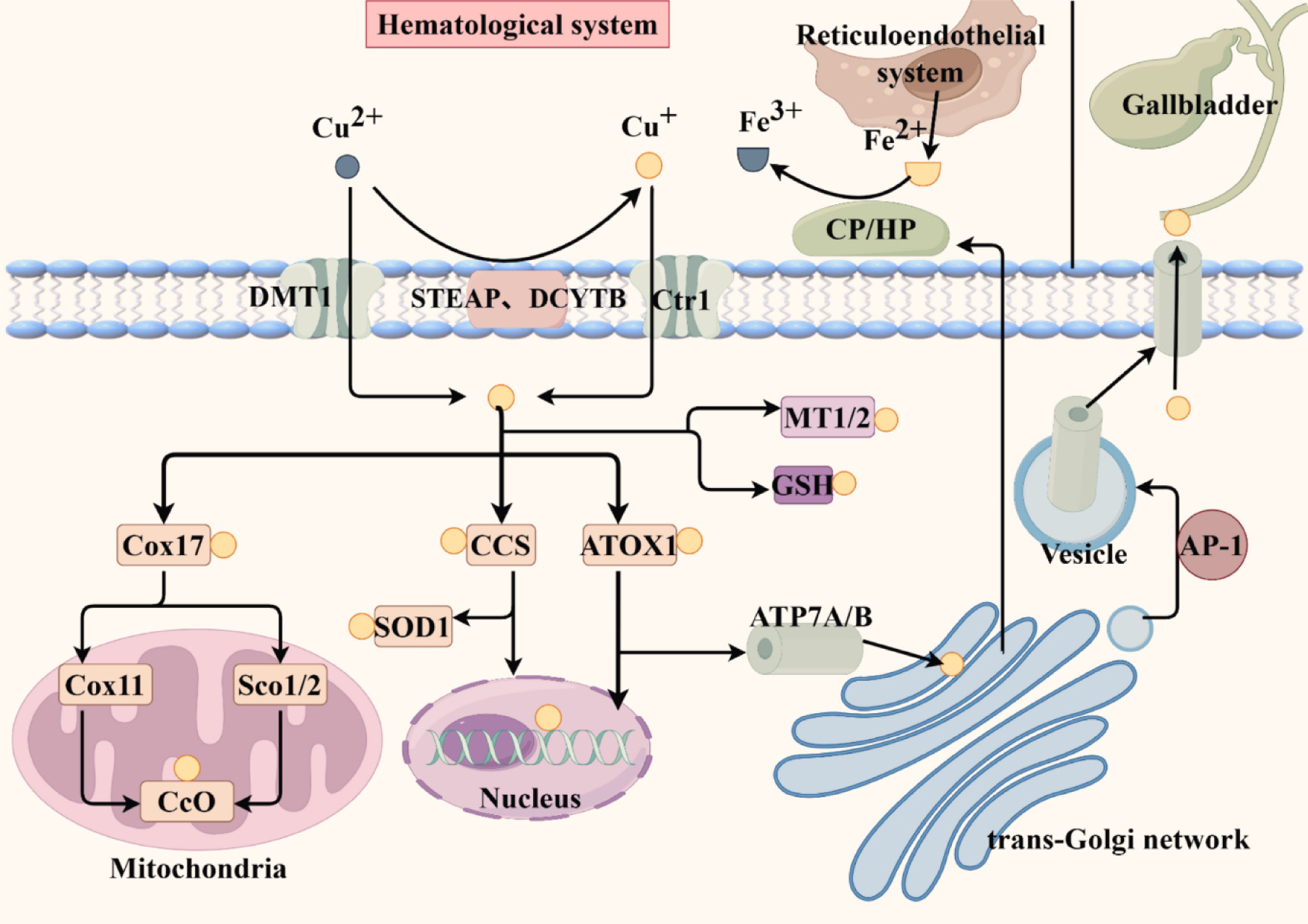Copyright
©The Author(s) 2025.
World J Hepatol. Aug 27, 2025; 17(8): 107803
Published online Aug 27, 2025. doi: 10.4254/wjh.v17.i8.107803
Published online Aug 27, 2025. doi: 10.4254/wjh.v17.i8.107803
Figure 1 Regulation of copper homeostasis in cells.
Copper metabolism is a complex and dynamic process that is regulated by multiple molecules at the cellular and organ levels. Copper uptake is mediated by Ctr1 and divalent metal transporter 1. Intracellularly, copper is transported to different subcellular organelles by various copper chaperone proteins, such as Cox17, CCS, and ATOX1, which facilitate the synthesis of copper-dependent proteins. When intracellular copper ions increase, they can bind to MT1, MT2, and GSH to limit the cytotoxicity of excess copper. ATP7A/B are trafficked to vesicles (AP-1 mediates normal vesicle formation), allowing the excretion of excess copper in hepatocytes into the gallbladder. Additionally, ceruloplasmin and its congener hephaestin participate in the normal oxidation of iron ions. This figure was created using FigDraw (www.figdraw.com) (Supplementary material).
- Citation: Gao DJ, Zeng T, Chong YT, Li XH. Copper and hepatic lipid dysregulation: Mechanisms and implications. World J Hepatol 2025; 17(8): 107803
- URL: https://www.wjgnet.com/1948-5182/full/v17/i8/107803.htm
- DOI: https://dx.doi.org/10.4254/wjh.v17.i8.107803









